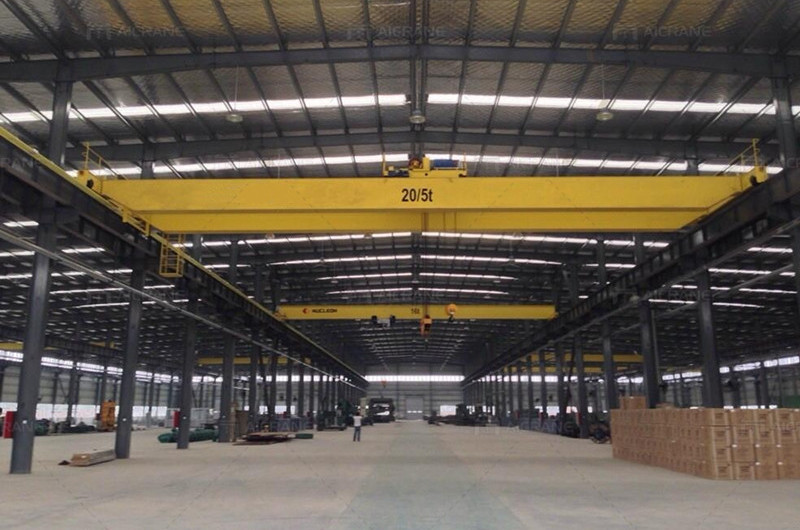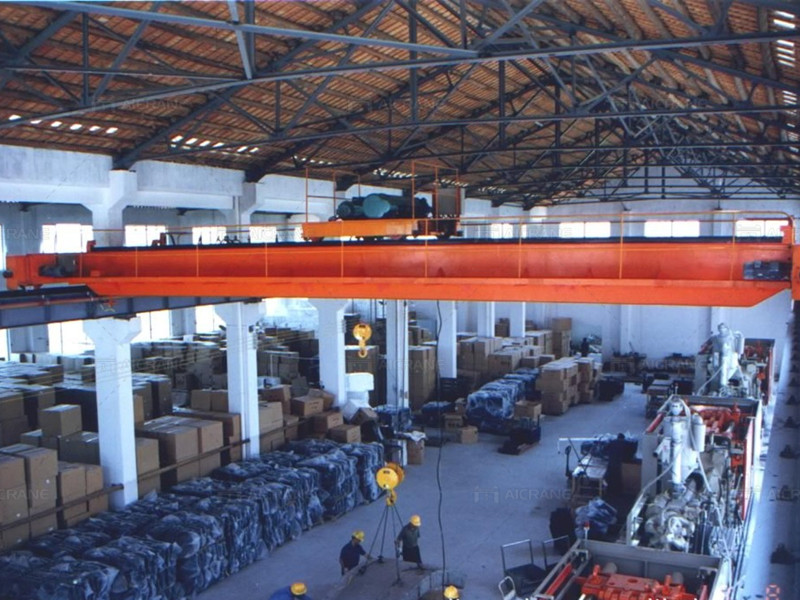Double beam Electric Overhead Travel (EOT) cranes are powerful lifting solutions widely utilized in industrial settings for their efficiency and versatility. Ensuring the safe operation of these cranes is paramount to prevent accidents, protect personnel, and maintain the integrity of both the equipment and the workplace. In this comprehensive guide, we will explore five key ways to safely operate a double beam EOT crane, covering critical aspects such as operator training, routine inspections, load management, communication protocols, and emergency preparedness.

Operator Training and Certification
The foundation of safe EOT crane operation lies in the competency of the crane operator. Proper training is indispensable to ensure that operators understand the crane’s controls, safety features, and operational intricacies. Comprehensive training programs should cover aspects such as:
Control Familiarity: Operators should be well-acquainted with the crane’s control panel, including the functions of buttons, switches, and emergency stop features.
Load Handling Techniques: Training should emphasize proper load handling techniques, including lifting, lowering, and maneuvering loads with precision.
Safety Protocols: Operators must be educated on safety protocols, including the correct use of personal protective equipment (PPE) and adherence to safety regulations.
Certification processes should be implemented to verify an operator’s competence. Regular refresher courses and ongoing training sessions ensure that operators remain up-to-date on industry standards and best practices.
Routine Inspections and Maintenance
Regular inspections and maintenance are essential to identify potential issues and address them proactively. A robust preventive maintenance program ensures the longevity of the equipment and enhances overall safety. Daily pre-operation inspections should become a standard practice for operators, covering critical components such as:
Visual Inspection: Examine the overhead crane for any visible signs of damage, wear, or misalignment in the structure, hooks, and trolley.
Functional Testing: Test the functionality of the crane’s controls, brakes, limit switches, and emergency features to ensure they operate smoothly.
Load Testing: Regular load tests within specified limits verify that the crane can handle intended loads safely.
Scheduled maintenance tasks, such as lubrication of moving parts, inspection of wire ropes and chains, and calibration of safety devices, should be performed by qualified technicians to prevent unforeseen failures.
Load Management and Capacity Awareness
Efficient load management is fundamental to safe EOT crane operation. Operators must be well-versed in the crane’s load capacity and limitations. Exceeding the crane’s rated capacity can lead to structural damage, equipment failure, and potential accidents. Load charts and capacity plates should be visibly displayed by the crane manufacturer, providing operators with easy access to crucial information.
Before lifting any load, operators must verify the weight and ensure it falls within the crane’s specified capacity. Additionally, proper rigging techniques should be employed, and the load should be evenly distributed to prevent imbalance. Effective communication between the operator and rigging personnel is crucial to coordinate safe load movements.

Effective Communication Protocols
Clear and effective communication is paramount for the safe operation of a double beam EOT crane, especially in environments where multiple personnel are involved. Establishing standardized communication protocols ensures that everyone on the worksite understands and follows the same procedures. Key communication practices include:
Hand Signals: Standardized hand signals should be used between the crane operator and ground personnel to convey instructions during load movements.
Two-Way Radios: In situations where direct visual communication is challenging, two-way radios facilitate real-time communication between the operator, spotters, and other team members.
Emergency Communication: Protocols for emergency communication must be established, including clear procedures for shutting down operations in the event of a safety concern or malfunction.
Emergency Preparedness and Response
While preventive measures are crucial, being prepared for emergencies is equally important. Crane operators and site personnel should be well-trained in emergency response procedures. This includes:
Emergency Stop Procedures: Operators must be trained to initiate emergency stops promptly in the event of any unsafe conditions or malfunctions.
Evacuation Plans: Clear evacuation plans should be established, detailing the steps to be taken in case of emergencies such as fire, power failures, or structural issues.
First Aid Training: Personnel on-site, including crane operators, should receive basic first aid training to provide immediate assistance in case of injuries.
Regular emergency drills and simulations enhance the preparedness of the entire team, ensuring a swift and coordinated response in critical situations.
Safe operation of a double beam EOT crane requires a holistic approach that encompasses operator training, routine inspections, load management, communication protocols, and emergency preparedness. By prioritizing safety at every stage of crane operation, industries can create a work environment that minimizes risks, protects personnel, and promotes the efficient and reliable use of this powerful lifting equipment. The integration of these safety measures not only safeguards the well-being of workers but also contributes to the longevity and optimal performance of the double beam EOT crane.